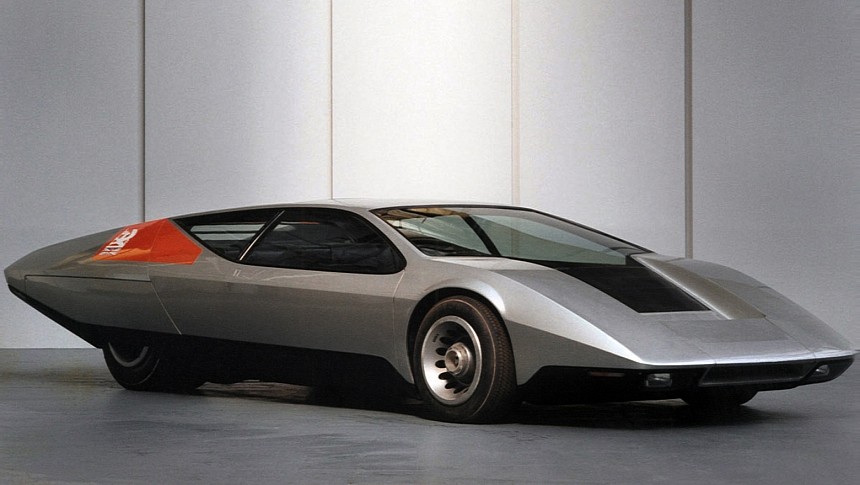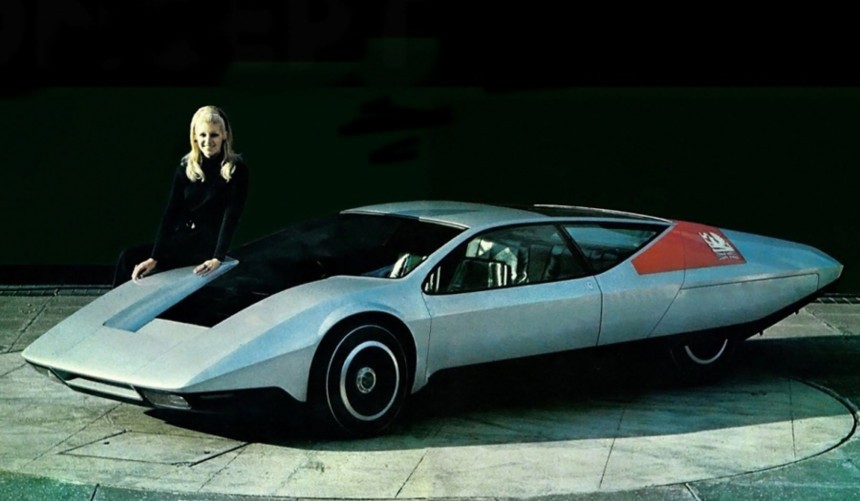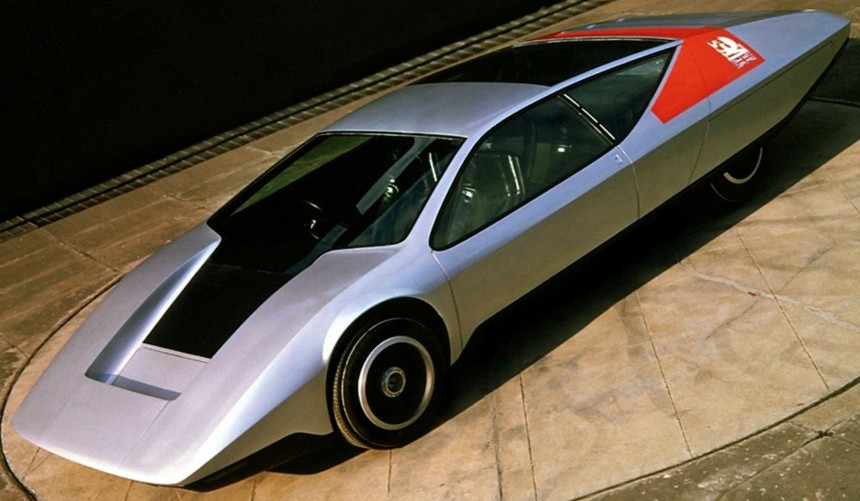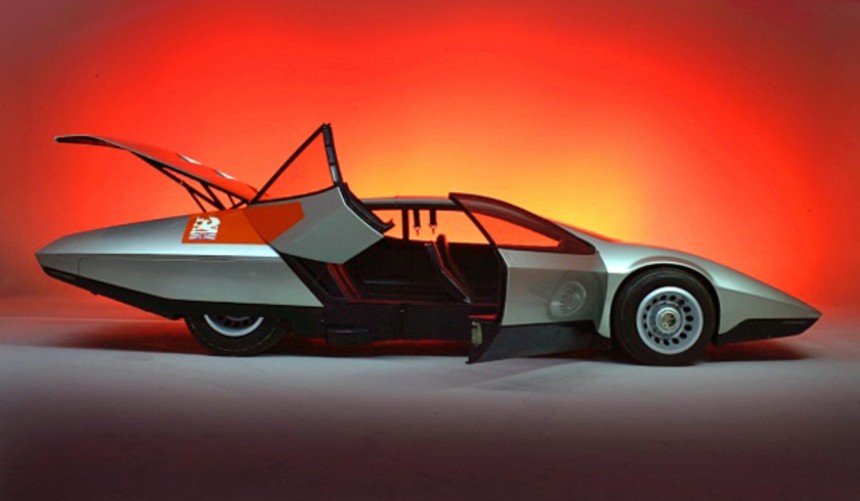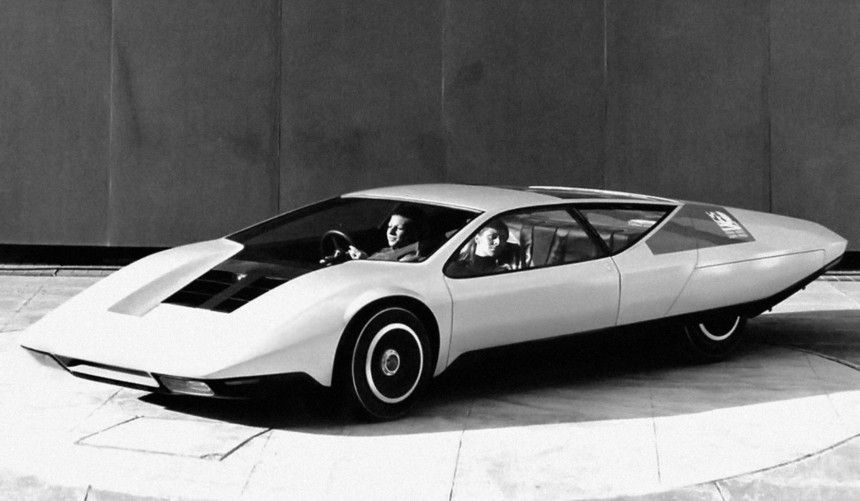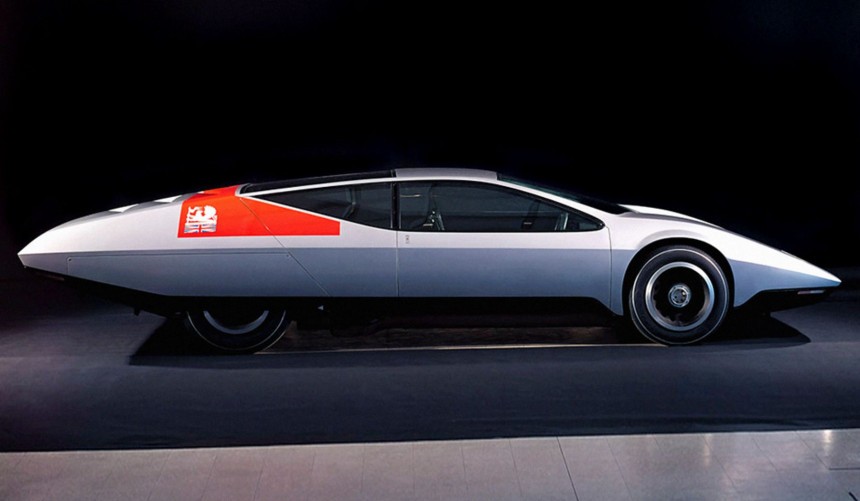Though never fully functional, the SRV was a mind-blowing vehicle at the time of its introduction, and more than half a century later, it's still surprisingly high-tech.
Founded in 1857, Vauxhall initially built pump and marine engines. The company steadily grew in the following decades, and in 1903, it began manufacturing cars.
Though initially successful, by the early 1920s, Vauxhall struggled to make a profit despite building high-quality, upscale models.
Facing an imminent demise, the British company was saved in 1925 when General Motors acquired it.
From then on, Vauxhall transitioned to building mid-range and entry-level models - a move that brought great success.
In modern times, the brand is known for marketing largely rebadged versions of siblings Opel.
The two brands were under GM's corporate umbrella for decades, but recently, they were acquired by automotive giant Stellantis. Nevertheless, Vauxhall still sells rebadged Opel passenger cars and rebadged Peugeot/Citroen/Fiat commercial vehicles.
Considering all that, it's safe to assume that for the last sixty years, working in Vauxhall's styling department had to be the most boring job on the planet for an automotive designer.
But that's far from the actual truth. Though their work never materialized into a mass-produced model, Vauxhall designers have created a series of original concept cars throughout the years, and the most impressive of them all was the 1970 SRV.
The story of this fascinating concept starts in the late 1960s. By then, Vauxhall had begun rebadging plebian Opel models for the British market, so no one was expecting to see a groundbreaking vehicle donning the griffin emblem.
However, American designer Wayne Cherry had an ambitious plan to show everyone that Vauxhall could develop one of the most sophisticated vehicles ever seen without help from other GM brands.
Cherry joined the GM ranks in 1962, shortly after graduating from the Art Center College in California. Three years later, he crossed the Atlantic, becoming one of the leading figures in the Vauxhall styling department.
In 1969, the designer sketched out an impressive concept that GM higher-ups immediately approved. With the help of a dedicated crew that included fellow stylists John Taylor and Chris Field, the show car dubbed Styling Research Vehicle (SRV) was turned into reality in less than a year.
Though some have accused Vauxhall of drawing a little too much inspiration from Italian wedge-shaped concepts of the era, like the Lancia Stratos Zero or Ferrari Modulo, the SRV was an original design that made its public debut several months before the aforementioned show cars.
Wayne Cherry actually drew inspiration from the era's short-nosed, long-tailed Le Mans race cars. Therefore, the concept's sharp-edged body was designed to deliver superior aerodynamics.
Apart from the unconventional shape of the body, Cherry and his team devised a series of high-tech features meant to improve aerodynamics even further.
Of those, the most impressive was an adjustable aerofoil integrated into the car's nose section, an electronic self-leveling suspension system at the rear, and an additional, front-mounted fuel tank that could be electronically filled or emptied (with fuel redistributed from/to the rear tank) to adjust the car's center of gravity.
That being said, the designer didn't want to create a futuristic supercar but reimagine the concept of a grand tourer.
Therefore, despite its appearance and mid-mounted powerplant, the SRV wasn't a typical two-seater.
It featured two additional seats in the rear, and to make it easier for passengers to climb in or out, a pair of innovative rear doors were added.
Hinged at the rear via a complex system, the hidden, handleless doors used the same virtual B-pillar concept made popular by the Mazda RX-8 mode three decades later.
But, unlike the RX-8, the doors and the rear passenger space were larger.
Although it was only 41 inches (104 cm) tall, the SRV was almost as spacious and comfortable as a full-size sedan - albeit the driver and passenger sat in a reclined position, very similar to that of a race car.
That was made possible by the long and wide monocoque chassis that allowed the team to place each seat well inside the structure.
Due to the low-slung sitting position, visibility was improved by moving the instrument cluster and all the controls to a driver's door-mounted console.
As for the tiny yet comfortable seats, all four were individual non-adjustable buckets upholstered in fine leather.
But while the front seats were non-adjustable, the steering column and pedal box were individually adjustable.
Initially, the plan was to equip it with a mid-mounted, 2.3-liter Vauxhall Slant-Four boosted by an experimental turbocharger. However, the layout required a new transaxle gearbox that would have taken too much to develop.
To complete the SRV in time for its scheduled debut, the team eventually opted against developing the novel powertrain, so the concept took center stage with a mockup engine and no gearbox.
The car was unveiled to the public at the Earls Court Motor Show in the fall of 1970. Despite being a static concept, it became the event's main attraction.
Unlike most show cars that make a splash after their debut but fade into obscurity shortly after, the SRV remained one of Europe's most popular concept cars for nearly a decade.
It continued to tour prestigious auto shows regularly until the late 1970s, and, as you can see in the YouTube video below by ThePetrolStop, it continues to make occasional appearances these days.
Though largely forgotten by most enthusiasts, the Vauxhall SRV still looks futuristic and high-tech.
Mentioned as an example of outstanding creativity in many automotive design courses, Vauxhall's first mid-engine passanger car is considered one of the greatest concepts cars ever created by many prestigious stylists.
Though initially successful, by the early 1920s, Vauxhall struggled to make a profit despite building high-quality, upscale models.
Facing an imminent demise, the British company was saved in 1925 when General Motors acquired it.
From then on, Vauxhall transitioned to building mid-range and entry-level models - a move that brought great success.
In modern times, the brand is known for marketing largely rebadged versions of siblings Opel.
The two brands were under GM's corporate umbrella for decades, but recently, they were acquired by automotive giant Stellantis. Nevertheless, Vauxhall still sells rebadged Opel passenger cars and rebadged Peugeot/Citroen/Fiat commercial vehicles.
Considering all that, it's safe to assume that for the last sixty years, working in Vauxhall's styling department had to be the most boring job on the planet for an automotive designer.
But that's far from the actual truth. Though their work never materialized into a mass-produced model, Vauxhall designers have created a series of original concept cars throughout the years, and the most impressive of them all was the 1970 SRV.
Created to showcase Vauxhall's capabilities
However, American designer Wayne Cherry had an ambitious plan to show everyone that Vauxhall could develop one of the most sophisticated vehicles ever seen without help from other GM brands.
Cherry joined the GM ranks in 1962, shortly after graduating from the Art Center College in California. Three years later, he crossed the Atlantic, becoming one of the leading figures in the Vauxhall styling department.
In 1969, the designer sketched out an impressive concept that GM higher-ups immediately approved. With the help of a dedicated crew that included fellow stylists John Taylor and Chris Field, the show car dubbed Styling Research Vehicle (SRV) was turned into reality in less than a year.
Le Mans race car-inspired aerodynamics mixed with innovative tech
Wayne Cherry actually drew inspiration from the era's short-nosed, long-tailed Le Mans race cars. Therefore, the concept's sharp-edged body was designed to deliver superior aerodynamics.
Apart from the unconventional shape of the body, Cherry and his team devised a series of high-tech features meant to improve aerodynamics even further.
Of those, the most impressive was an adjustable aerofoil integrated into the car's nose section, an electronic self-leveling suspension system at the rear, and an additional, front-mounted fuel tank that could be electronically filled or emptied (with fuel redistributed from/to the rear tank) to adjust the car's center of gravity.
That being said, the designer didn't want to create a futuristic supercar but reimagine the concept of a grand tourer.
Hidden rear doors three decades before Mazda made them popular
It featured two additional seats in the rear, and to make it easier for passengers to climb in or out, a pair of innovative rear doors were added.
Hinged at the rear via a complex system, the hidden, handleless doors used the same virtual B-pillar concept made popular by the Mazda RX-8 mode three decades later.
Surprisingly spacious for a mid-engine machine
Although it was only 41 inches (104 cm) tall, the SRV was almost as spacious and comfortable as a full-size sedan - albeit the driver and passenger sat in a reclined position, very similar to that of a race car.
That was made possible by the long and wide monocoque chassis that allowed the team to place each seat well inside the structure.
Due to the low-slung sitting position, visibility was improved by moving the instrument cluster and all the controls to a driver's door-mounted console.
As for the tiny yet comfortable seats, all four were individual non-adjustable buckets upholstered in fine leather.
But while the front seats were non-adjustable, the steering column and pedal box were individually adjustable.
One of the longest-serving concept cars in history
To complete the SRV in time for its scheduled debut, the team eventually opted against developing the novel powertrain, so the concept took center stage with a mockup engine and no gearbox.
The car was unveiled to the public at the Earls Court Motor Show in the fall of 1970. Despite being a static concept, it became the event's main attraction.
Unlike most show cars that make a splash after their debut but fade into obscurity shortly after, the SRV remained one of Europe's most popular concept cars for nearly a decade.
It continued to tour prestigious auto shows regularly until the late 1970s, and, as you can see in the YouTube video below by ThePetrolStop, it continues to make occasional appearances these days.
Though largely forgotten by most enthusiasts, the Vauxhall SRV still looks futuristic and high-tech.
Mentioned as an example of outstanding creativity in many automotive design courses, Vauxhall's first mid-engine passanger car is considered one of the greatest concepts cars ever created by many prestigious stylists.
